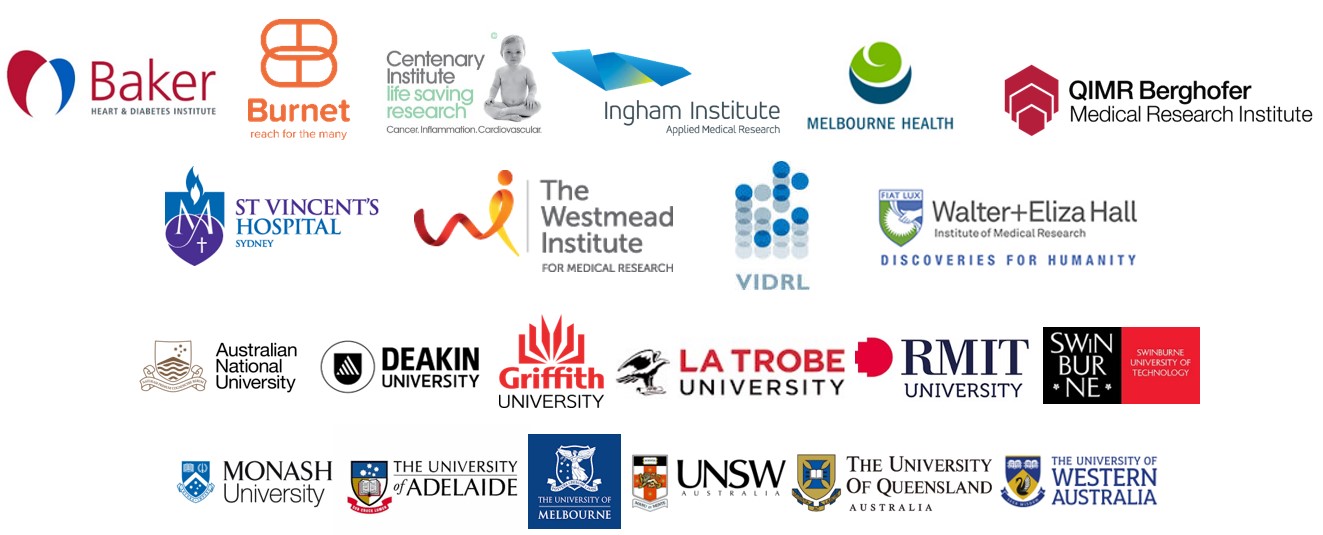Become Part Of The Solution
Learn more about financial support provided by the Australian Centre for HIV & Hepatitis (ACH4) research into the most important blood borne viruses afflicting Australians: HIV, HBV, HCV and HTLV-1 (which is a major concern in central Australia).
We are one of Australia's four national centres for blood borne virus research funded by the Commonwealth Government.
Meet ACH4
ogy.ACH2 formed in 2003 from Australia’s’ first emergency virology teams responding to the HIV pandemic in the late 1980’s and 1990’s as a Commonwealth Government-funded national virtual institute.
ACH2 has progressively broadened the objectives to combat the impact of human immunodeficiency virus (HIV), hepatitis B virus (HBV), hepatitis C virus (HCV) and human T-lymphotropic virus type-1 (HTLV-1) in Australia and the Asia-Pacific region by bringing together basic researchers with translational scientists and physicians.
ACH2 represents a key part of Australia’s national response to HIV, Hepatitis B, Hepatitis C and HTLV-1 which are important blood borne and sexually transmissible infections in Australians, including Aboriginal and Torres Strait Islander populations. The response relies upon a cohesive national virology program provided by the ACH4 – the “Australian Centres for HIV, HTLV-1, Hepatitis B and Hepatitis C Virology” research.
Areas of Research
It is our aim to produce results that will help combat the impacts of HIV, HBV, and HCV and HTLV-1
locally in Australia and in the Southeast Asia and Pacific regions.
People diagnosed with HIV
- In 2020, there were an estimated 29,090 people living with HIV in Australia. Of those, an estimated 91% (25,490 people) had received a diagnosis. Of those diagnosed, 96% (24,220) were retained in care and 91% (24,220 people) were receiving antiretroviral therapy (ART). The HIV incidence rate among gay and bisexual men was 0.11 new infections per 100 person‐years, based on 633 HIV notifications with a first ever diagnosis in Australia in 2020.
Source: Kirby Institute. HIV, viral hepatitis and sexually transmissible infections in Australia: annual surveillance report 2021. Sydney: Kirby Institute, UNSW Sydney; 2021
Image Credit to Dr Jason A. Roberts, VIDRL – Doherty Institute.
- In 2020, an estimated 73% (162 480) of people living with chronic hepatitis B in Australia, had been diagnosed with the infection.
- Of those diagnosed with chronic hepatitis B, an estimated 23% (50 229) were receiving regular clinical care.
- In 2020, an estimated 364 deaths were attributed to chronic hepatitis B infection. This is a reduction of 19% from 452 in 2011
Source: Kirby Institute. HIV, viral hepatitis and sexually transmissible infections in Australia: annual surveillance report 2021. Sydney: Kirby Institute, UNSW Sydney; 2021
Image Credit to Dr Jason A. Roberts, VIDRL – Doherty Institute.
Epidemiology
- In 2020, there were 117,810 people living with chronic hepatitis C, of whom an estimated 90,560 (77%) had been diagnosed, and 67,920 (75% of those diagnosed) had a hepatitis C RNA test to confirm their chronic hepatitis C infection. Of the 123,770 people living with chronic hepatitis C at the start of 2020, 8,100 people (7%) received hepatitis C treatment during 2020 and 7610 (94% of those treated) were cured.
- In 2020, the hepatitis C incidence rate was 0.6 new infections per 100 person/years, based on 7,990 hepatitis C notifications.
- The overall notification rate of hepatitis C declined by 31% over the 10‐year period 2011 to 2020, from 45.1 per 100 000 to 31.2 per 100 000 respectively.
Source: Kirby Institute. HIV, viral hepatitis and sexually transmissible infections in Australia: annual surveillance report 2021. Sydney: Kirby Institute, UNSW Sydney; 2021
Image supplied by The Westmead Institute for Medical Research.
Cases in Australia
- Without systematic screening nor notification outside NT, there are very limited data regarding the epidemiology of HTLV-1 in Australia, it is clear that the infection is prevalent amongst Aboriginal people in the Northern Territory with an overall prevalence of 10.4%, and a substantially higher rate (17.1%) in Central Australia. The prevalence increases with age with 0% in 0-14 year olds increasing to 3.2% in those aged older than 45.
- Between 1994 and 2017 there were 1,200 new notifications of HTLV-1 in NT (Dr. Vicki Krause), with the majority from Alice Springs. There is no established antiviral treatment for HTLV-1 infection, but anti-inflammatory steroids (prednisolone) can provide symptomatic relief.
Source: https://ausglobalhealth.org/wp-content/uploads/HTLV-REVIEW_22072015-FINAL.pdf
Image supplied by Doherty Institute.
Focus Your Efforts
ACH4 oversees three major activities in its effort to deliver these virological and immunological research findings.
Learn more about these activities and where you can take an active role.
Watching infectious diseases destroy human lives is intolerable, become part of the solution
Upcoming Events...
Successful grants
Distributed to scientists in the following Australian Institutions:

Join The Research
Learn more about our research and how we are changing the management of these bloodborne sexually transmitted viruses and diseases.
